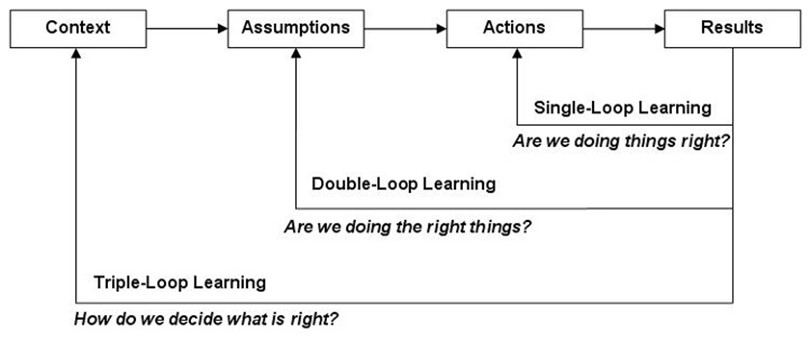Since 2013, the AMS Symposium on Building a Weather-Ready Nation (WRN) has brought together meteorologists and other Weather, Water, and Climate Enterprise partners to discuss efforts in advancing what it means to be “Weather-Ready.” At the 104th AMS Annual Meeting, for the second year in a row, the WRN Symposium will be opening their program Monday morning at 8:30 AM ET in Baltimore with a special, interactive session: “WRN Asks: What If…?” We spoke to one of the program chairs for this Symposium, Trevor Boucher from the National Weather Service, about why this session is unique and why AMS attendees might want to check it out.
What’s so special about this session, and how did it come about?
Trevor: The design and discussion are both very different from a traditional 12-minute presentation or panel session. Weather Ready Nation Symposium was created shortly after the National Weather Service introduced the WRN Initiative as a forum to share lessons learned, successes, and best practices. After a decade of this pursuit, several recurring themes arose: How do we, the Weather Enterprise, target underserved and vulnerable populations? How do we communicate our science effectively? How do we focus on our publics/partners while also maintaining our own well-being? These provocative questions are not easily addressed through the traditional paradigm of science conferences. Last year, the 11th WRN Symposium looked to an interactive, collaborative strategy to address big societal challenges, hosting a special session called, “WRN Asks: What if…?” which embraced the concept of “transformative learning.” We shifted the focus to collective, group discussion, and critically reflecting on what we’ve all learned since 2013.
This year’s “What if…?” session not only fits into the Annual Meeting’s “Living in a Changing Environment” theme but intentionally asks the provocative “elephant in the room” questions that are difficult to have in a traditional session. We designed this session as a “reverse panel,” where moderators provide a 3-minute “state of the science” with respect to their backgrounds and propose an open-ended, “What if…?” question to the audience. Then their role shifts to moderating audience discussion for the remainder of their 20-minute slot. So you might see notable names on the agenda, but they do the least amount of talking. The audience are the true panelists, sharing their opinions, their knowledge, and their concerns about these questions.
Where did this idea come from?
Trevor: To be honest, the design inspiration and name largely came from the Marvel Cinematic Universe (MCU). There is an animated series with the same name that explores how certain character storylines would progress in alternate scenarios or timelines. What would the implications be if certain details of these characters changed? Additionally, the show Black Mirror on Netflix is another inspiration, exploring how some seemingly inevitable technological advancements like AI or cybernetic implants may change our society. Similarly, we wanted to explore “What if…?” scenarios around how our science may look if things progress, change directions, or stay the same.
One of last year’s discussion moderators, Dr. Justin Sharpe, helped us also understand how this style of discussion fits very nicely into the concept of Transformative Learning (Mezirow, 1995, 2000) and engendering critical reflection of the audience. For the chairs, this also helps us reflect on how we craft our scientific discussions each year in our program. The single, double, and triple-loop deutero learning model (below) applies to both the audience and the chairs simultaneously.

The goal for this year’s session is to inspire the following year’s call for abstracts. We will be taking notes on everything discussed from the audience and planning follow-up sessions called “What’s Next?” based on the discussion. We hope people will be excited to contribute to these discussions for years to come.
How did the first “What if…” session go last year?
Trevor: Exceptionally well. Even though it was the first time we tried this and it was the opening Monday morning session of the Annual Meeting, with a LOT of competition for the membership to choose from, we had about 40-50 folks and had no problem with participation. In fact, we had to cut discussions off for all four questions proposed. I honestly think everyone who attended spoke up at some point through the 90-minute session.
My favorite part was an idea from Doug Hilderbrand, the creator of the WRN Symposium. He asked all the students in the audience to raise their hand, and promised they would be prioritized in the discussion, since these topics are likely what they will be grappling with throughout their upcoming careers.What’s in store for attendees this year?
Trevor: Four new moderators with four new questions! And we have become a bit more emboldened to ask even more provocative questions this year. Some of them are excellent examples of #HowtoStartaMetFight (a popular Twitter hashtag from years ago). I personally can’t wait to see where the discussion takes us. The questions include…
“What if all weather information was probabilistic?”
Dr. Sean Ernst (OU’s Institute for Public Policy Research and Analysis)
“What if there wasn’t a stigma when talking about climate change?”
Jared Rennie (Research Meteorologist – NCEI)
“What if we didn’t change anything?”
Dr. Tanya Brown-Giammanco (Director – NIST Disaster and Failure Studies)
“What if there was no ego in the weather enterprise?”
Matt Lanza (Managing Editor – Space City Weather)
I’ve been on all our coordination calls and dry runs with these folks and we have had to cut short our 90-minute meetings each time because we just can’t help but discuss these important questions — and that’s just 6-7 of us. I really think AMS attendees will find it to be an invigorating way to begin their week in Baltimore.
About the AMS 104th Annual Meeting
The American Meteorological Society’s Annual Meeting brings together thousands of weather, water, and climate scientists, professionals, and students from across the United States and the world. Taking place 28 January to 1 February, 2024, the AMS 104th Annual Meeting will explore the latest scientific and professional advances in areas from renewable energy to space weather, weather and climate extremes, environmental health, and more. In addition, cross-cutting interdisciplinary sessions will explore the theme of Living in a Changing Environment, especially the role of the weather, water, and climate enterprise in helping improve society’s response to climate and environmental change. The Annual Meeting will be held at the Baltimore Convention Center, with online/hybrid participation options. Learn more at annual.ametsoc.org.
